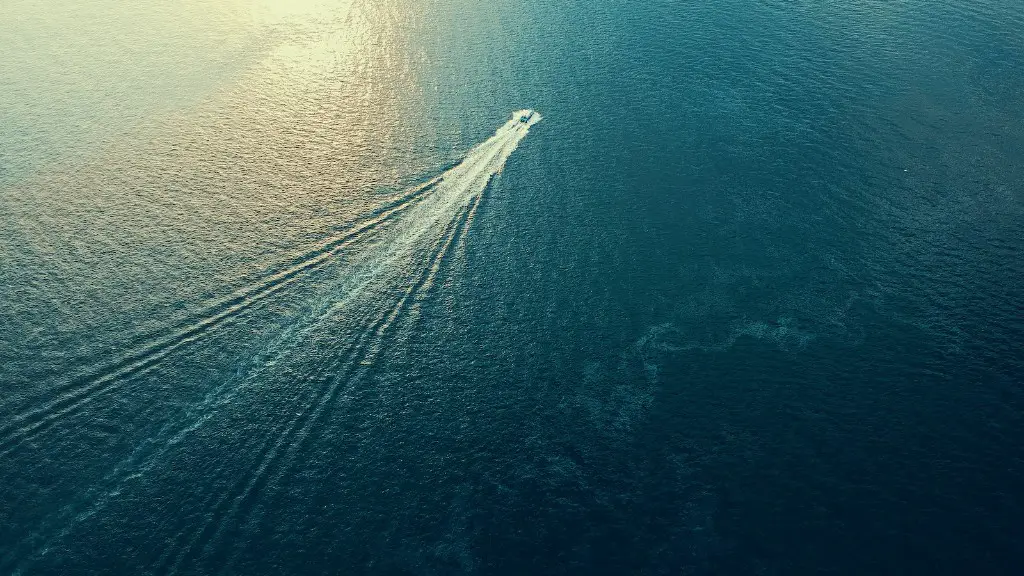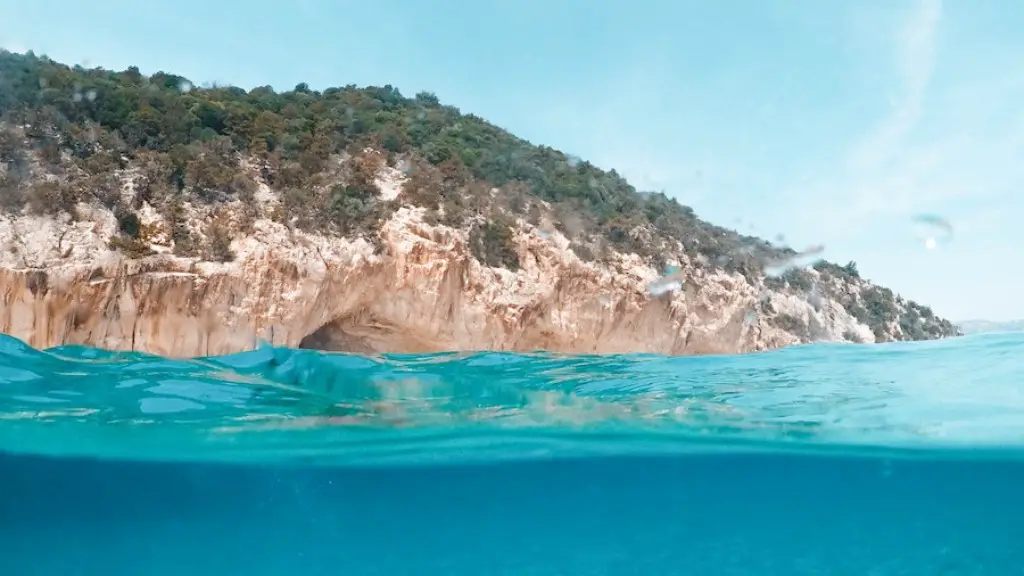Mediterranean Sea: An Overview
The Mediterranean Sea, situated between the southeastern region of Europe and North Africa, is one of the most storied bodies of water in the world. It has been the setting for some of civilization’s earliest settlements, and its shores have been home to many of antiquity’s most famous cultures. Its waters are home to a rich diversity of wildlife, including numerous species of fish, marine mammals, and invertebrates. But while most people are familiar with the Mediterranean’s iconic fish and cephalopod species, the question remains: Are there whales in the Mediterranean Sea?
Depth and Nutrients
The Mediterranean Sea is relatively shallow and nutrient-poor in comparison to the world’s other oceans, making it an unlikely home for some of the larger whale species. The average depth of the Mediterranean Sea is around 4,900 feet, with the deepest part reaching 2.5 miles. Nutrient levels, on the other hand, are very low. Poor oxygenation, a shortage of plankton, and warmer temperatures make it an inhospitable environment for many whale species.
Whaling in the Mediterranean
Whaling in the Mediterranean has been a part of the region’s history since antiquity. Ancient civilizations such as the Phoenicians and the Romans hunted whales for their meat and blubber, and commercial whaling continued in the region until the late 19th century. In the 20th century, whaling was largely replaced by scientific research and sustainable whale-watching activities. Despite a ban on whaling in the Mediterranean, whale carcasses can occasionally be found washed up on the region’s beaches.
The Case of the Fin Whale
The fin whale (Balaenoptera physalus), one of the largest living mammal species, has been found in the Mediterranean Sea as recently as the early 2000s. Fin whales have been observed off the coasts of Greece, Malta, Tunisia, and Turkey, and acoustic studies suggest that they are a regular presence in the region. Fin whales in the Mediterranean appear to be using the region as a migratory pathway, although it is unclear whether or not they are resident there.
Other Cetacean Species
In addition to the fin whale, several other whale species have been recorded in the Mediterranean Sea. The sperm whale (physeter catodon) is a regular presence in the Mediterranean, particularly around the eastern Mediterranean and Aegean Sea. Other cetacean species such as the minke whale (balanoptera acutorostrata), bottle-nose dolphin (Tursiops truncatus), and humpback whale (Megaptera novaeangliae) have also been seen in the region.
Habitat Threats
Despite the presence of these species, the Mediterranean Sea is not an ideal habitat for many whale species. Maritime activities such as fishing, shipping, and noise pollution can disrupt the whales’ migratory patterns, while overfishing is reducing their food sources. Climate change poses an additional threat, as the warming of the Mediterranean Sea may reduce the amount of plankton available to whales and other marine life.
Conservation Measures
To protect whales and other marine species in the Mediterranean, government agencies and conservation organizations are working together to promote sustainable practices. The International Whaling Commission has implemented policies to regulate fishing and other human activities in maritime zones. It also works to raise public awareness about the importance of conservation and provides resources for research and data collection.
Update on Whale Species in the Mediterranean
Although we still do not know the exact number of whale species in the Mediterranean Sea, scientific studies have provided valuable insights into the region’s whale populations. Recent research suggests that the fin whale and sperm whale are the two most common species in the Mediterranean, while other species such as the minke whale and humpback whale are occasionally spotted. It is important to remember, however, that many whale species remain threatened due to habitat destruction and overfishing.
The Impact of Ecotourism
As awareness of the Mediterranean Sea’s whales has increased, the region has become increasingly popular with ecotourists. Responsible whale-watching provides the opportunity to observe whales in the wild and observe their behavior. Tourists are encouraged to respect the whales’ natural habitats, maintain a respectful distance, and avoid disturbing their tranquility. Ecotourism can also be a powerful driver of conservation efforts and public outreach.
Recreational Boating
Recreational boating is also on the rise in the Mediterranean Sea, as more people enjoy the region’s coastal landscape. However, recreational boating can impact the welfare of whales, as boats can generate noise that can disturb whale communication and disrupt their behavior. Boaters are encouraged to adhere to guidelines such as avoiding whale breeding grounds and keeping a respectful distance from the whales.
The Case for Coexistence
The Mediterranean Sea is home to numerous whale species and other forms of marine life that share its waters. To ensure the welfare of these species and to protect them from the impacts of human activities, it is important that humans and whales coexist in harmony. Through responsible tourism, conservation efforts, and public awareness, we can ensure that the Mediterranean Sea remains a safe habitat for whales and other marine life.


